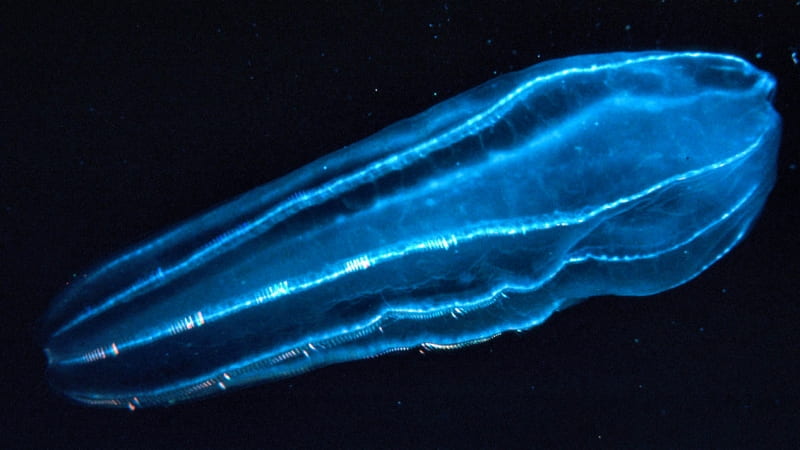BIOLUMINESCENCE IN THE NATURAL WORLD
By: Carolyn Wilke

The zooplankton Beroidae use their hair-like projections called cilia to propel through the water. U.S. NOAA/WIKIMEDIA COMMONS
For my nephew’s birthday, I got him a kit of experiments based on the science of glowing. He loved it and I think his mother was probably happy I opted for this one over the “gross science” kit (complete with toilet bowl shaped mixing device) that would have definitely been a hit. Together, we made some “invisible ink” and wrote messages to each other, which we could read after illuminating them with a little black light. I’m sure my nephew will have fun with the rest of the experiments, though many of them are science activities where the glowing is non-essential, but adds an extra cool factor.
But, why not? Things that glow have long captivated our imaginations. For me, the word “glow” itself evokes images of fairies and magical potions, or the latest Disney movie I’ve seen in which some luminous object is key to the storyline.
Glow-ers of the natural world also provide beauty and fascination. Many of us have memories of catching fireflies on a summer evening. Some are lucky to swim in a sea of glowing dinoflagellates, a type of marine plankton that emits a blue colored light. This light produced by living organisms is called bioluminescence, and it occurs in some bacteria, fungi, fish, and many varieties of jellyfish and squid. Its purpose can be to attract a mate, as in fireflies; to warn a predator of toxins, as in the larvae of some insects; or to lure prey, as does the anglerfish, a deep-sea dweller.
The light is the product of a chemical reaction within the cell, insect, or animal. The most common type of chemical reaction that produces bioluminescence is an enzyme-substrate reaction, in which the enzyme—a catalyst—allows the reaction transforming the substrate to take place. Generally, these reactions involve a substrate molecule from a class of chemicals called luciferins, which (when aided by the enzyme luciferase) reacts with oxygen to produce light.
Several fascinating applications of bioluminescence have helped scientists search for answers to difficult biological and environmental questions. By modifying the genes of an organism, it can be “programmed” to glow in response to some sort of stimulus, either an external condition or a function occurring within the organism itself.
For instance, biologists have used bioluminescence in plants, algae, insects, and rodents to study the circadian rhythms, processes that depend on an organism’s daily biological clock, and survey how they are affected by light or other factors. In my field, genetically modified bacteria that produce light with a brightness correlating to the concentration of a contaminant have made it simpler to detect toxic chemicals. These “bioreporters” have been used to measure low concentrations of mercury, arsenic, that other important environmental pollutants in water, soil, and even food by measuring their bioluminescence.
